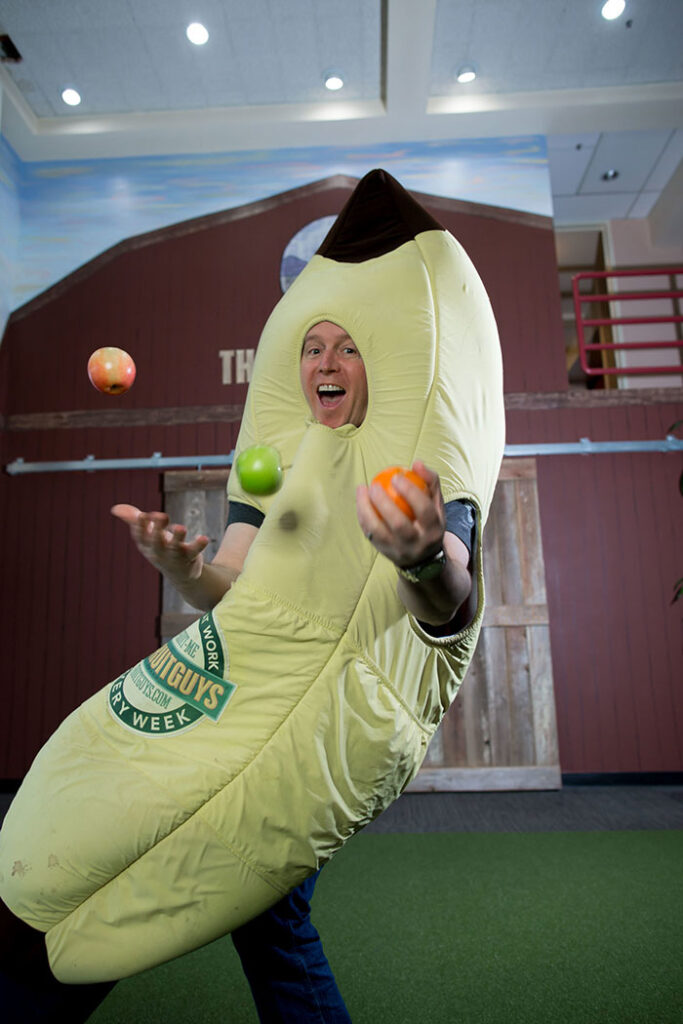Should We Rename Fresh Blood Oranges?
- By Lex Flamm
- Reading Time: 6 mins.
In 2023, a post circulating on the social media platform Reddit kicked off intense citrus discourse. The photo, captioned “Raspberry Oranges,” showed a peeled orange with flesh so dark red it was nearly black.
“Finally, goth oranges,” one commenter wrote, snagging 2,600 likes.
Another said, “I kinda just assumed these were blood oranges for people who were afraid of the word ‘blood.’”
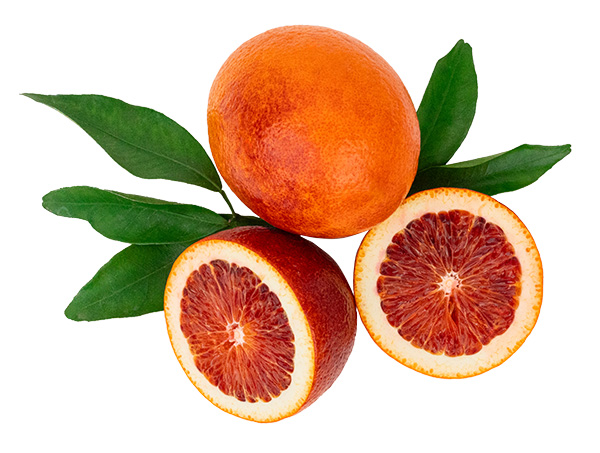
The comment may have been tongue-in-cheek, but it was exactly right. Raspberry Oranges® is a trademarked variety of fresh blood oranges from Kings River Packing, an eighth-generation family farm in Sanger, California. Kings River used to market its fruit under the name “blood orange.” But nearly a decade ago, one of its customers in the Northeastern US reported the dark red fruits just weren’t selling—and they thought the name might be to blame.
What Are Blood Oranges, Anyway?
Blood oranges—also known as pigmented oranges—are related to sweet oranges like Navels and Valencias. They come in different varieties, including Moro, Tarocco, and Sanguinelli, and ripen up in the California winter and spring.
Each variety is a bit different, but bloods have a few things in common. They have roots in Asia and the Mediterranean, and when you cut them open, they shine like rubies with flesh ranging in color from magenta to deep burgundy. Bloods are also loaded with Vitamin C and anthocyanin, an anti-inflammatory antioxidant that gives them their signature color and name.
Tasters report that fresh blood oranges are sweet-tart, with hints of tea and berry. That last flavor note inspired Kings River’s rebrand.
Goodbye Blood Oranges, Hello Raspberry Oranges®
Jesse Silva, Kings River’s vice president of sales, told The FruitGuys that the customer struggling to sell bloods asked his team “to come up with something new and innovative to market traditional blood oranges.” So, they started researching other options.
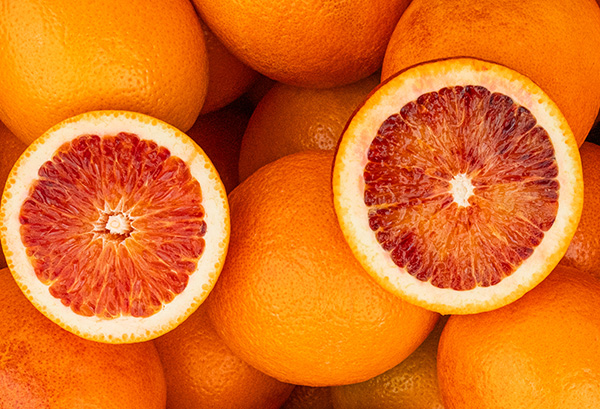
“In our investigation, we found the word ‘blood’ didn’t take well to younger groups who viewed it negatively. They were also confused with the word ‘Moro’ and other words that others tried to market at the time. We investigated the characteristics that make up a blood orange and found that blood oranges and raspberries share similar antioxidants that create a red pigment in the fruit. It was also recognized by many of us who love blood oranges that the fruit carries a distinct berry-like flavor. That’s when the Raspberry Oranges® brand name was born. We created the brand and never looked back,” he said.
Kings River applied for the Raspberry Oranges® trademark in 2018, and Silva said the rebrand was an immediate hit.
“We have grown the demand for blood oranges tremendously and the Raspberry Oranges® brand leads all sales across most retailers in the US,” he said.
Other fruit sellers have made similar name updates, including Bee Sweet Citrus, a grower, packer, and shipper in Fowler, California.
Want farm-fresh fruit?
We've got you covered.Bee Sweet Citrus Goes Royal Red®
In 2023, Bee Sweet applied for the Royal Red® trademark for its fresh blood oranges.
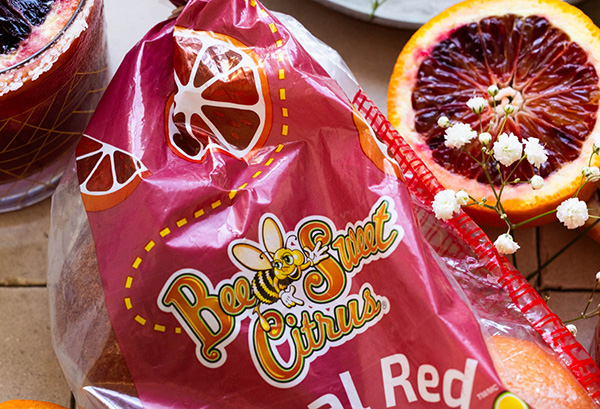
“Bee Sweet’s Royal Red® oranges are part of our premium citrus line, so we wanted to brand the variety with a name that represents its seasonality and exclusivity,” Bee Sweet Director of Communications Monique Mueller told The FruitGuys.
She also said that the name change has boosted the fruit: “The name Royal Red® oranges has generated many positive inquiries and excitement among foodies and shoppers who enjoy incorporating citrus into their diets.”
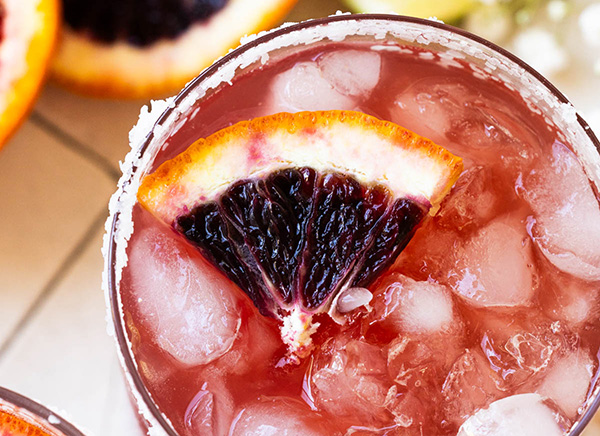
While Bee Sweet and Kings River are taking a softer approach to blood oranges with their rebrands, not every citrus company is leaving what Michelin Guide calls the fruit’s “macabre moniker” behind.
In fact, one Australian brand has doubled down on the bloody theme.
Dracula Citrus™ Leans Into the Spooky Factor
Daniel Newport is an account manager for the Australia-based fruit marketer Pinnacle Fresh. In 2016, he was working to bring more Australian citrus to the US market, and he noticed retailers taking an interest in his fresh blood oranges. He thought that with the right name, he could sell even more of them—so he and the Pinnacle team started brainstorming.
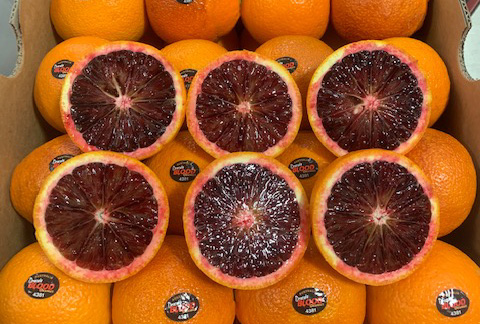
“We just wracked our brains for a while and thought, ‘Okay we’re going to come up with a name that makes people notice blood oranges.’ And Dracula Citrus™, among hundreds of names we came up with, just seemed to pop a little bit more,” he told The FruitGuys.
From there, Pinnacle went all-in on the Dracula™ brand. Every bag of its blood oranges stars a delighted cartoon vampire sinking his fangs into the citrus and releasing a bloody gush of juice.
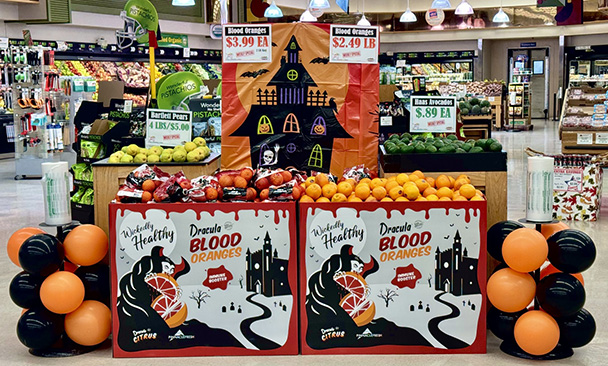
Almost a decade later, customers can find Dracula Citrus™ in thousands of stores across the US, including heavy hitters like Kroger and Walmart. The brand has a whole vampire family now—one member for each type of citrus it sells. A chubby-cheeked infant with a widow’s peak represents Dracula™ baby mandarins, for example.
How Halloween Changes the Game
Since Pinnacle’s Australian bloods are in season in the summer and fall (the opposite of the California citrus schedule) marketing Dracula™ blood oranges as a Halloween treat has helped the brand succeed. Stores use the oranges to build spooky displays shaped like castles or festooned with bats.
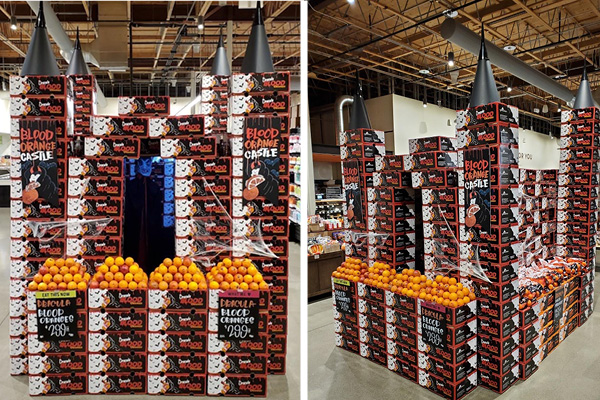
“Instead of kids only reaching toward candy for Halloween, if we could get one kid pointing out Halloween Dracula™ blood oranges and saying, ‘Mom, I want them!’ that would just put a smile on our face,” Newport said, adding, “We may not have gone down that path [with the Dracula™ name] if we didn’t have that peak season timing in September and October.”
The Future of Blood Oranges
So, which is it—will the blood orange name fade out of fashion, or become the daring darling of the produce aisle? Both Kings River and Pinnacle told The FruitGuys that they’ve seen other companies imitate their marketing strategies, so it’s hard to say which way the wind is blowing.
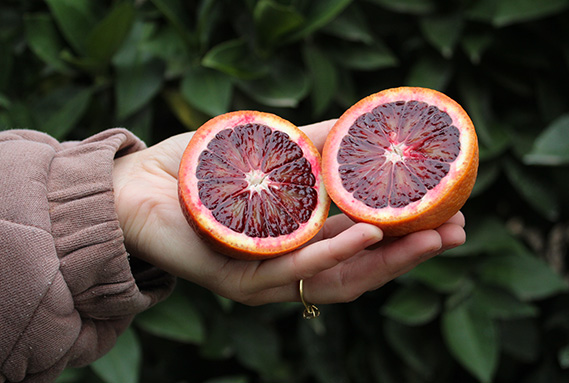
Another Reddit comment sums up the disparity: “Fun fact: In Norway, we have stopped calling it blood oranges and started calling it red oranges to not frighten kids. [But] I still call it blood orange to get my son to eat it.”
Final Thoughts From a Fruit Buyer
Miguel Robles, the Southern California produce buyer for The FruitGuys, takes a larger view of the industry. He purchases citrus from dozens of farms and companies to stock The FruitGuys’ fresh fruit delivery boxes for offices and schools, including Kings River Packing and Bee Sweet Citrus.
“I’ve started noticing a trend this year of blood oranges being named something different from a couple of our suppliers. I know companies will often call a fruit something unique to help market it, so I thought that was the reason for the newly named blood oranges popping up. But we’ve also worked with growers who have told us certain names don’t sell well, so they change them,” he said.
Miguel added that the logic behind the trademarks makes sense, and said he can see the argument against using the term “blood” to describe a tasty snack.
“Even though I know “blood” refers to the color of the fruit inside, I understand changing the name in case people feel grossed out by having the word “blood” associated with their food,” he said. “Still, I hope people will give blood oranges a try no matter what they’re called. They have a unique flavor that marries sweetness and tartness and really sets them apart from all of the sweet citrus out there. Also, they look different and amazing.”


